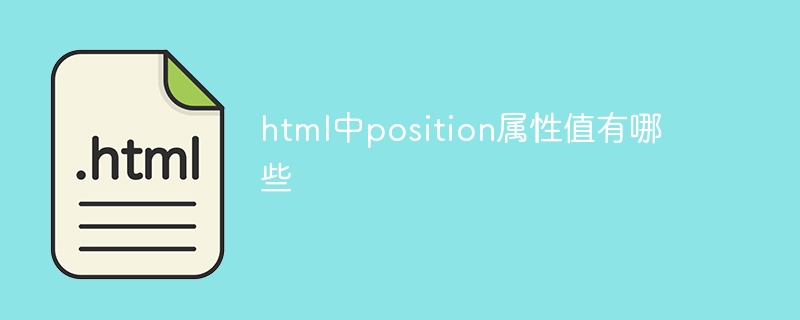
The position attribute values in html include static, relative, absolute, fixed, sticky, etc. Detailed introduction: 1. static, elements are arranged according to the normal document flow and will not be affected by positioning; 2. relative, elements are positioned relative to their normal positions; 3. absolute, elements are positioned relative to their nearest positioned ancestor elements Positioning; 4. fixed, the element is positioned relative to the viewport; 5. sticky, etc.

# Operating system for this tutorial: Windows 10 system, Dell G3 computer.
In HTML, the position attribute is used to define how an element is positioned. It has the following attribute values:
static (default value): elements are arranged according to the normal document flow and will not be affected by positioning. The left, right, top, and bottom attributes are not valid for statically positioned elements.
relative: The element is positioned relative to its normal position. You can adjust the position of elements using the left, right, top, and bottom attributes. Relative positioning does not affect the position of other elements, and the space it occupies is still retained.
absolute: The element is positioned relative to its nearest positioned ancestor element. If there is no positioned ancestor element, positioning is relative to the root element of the document. You can adjust the position of elements using the left, right, top, and bottom attributes. Absolute positioning breaks away from the normal document flow and does not occupy the space of other elements.
fixed: The element is positioned relative to the viewport, and the element's position will not change even if the page scrolls. You can adjust the position of elements using the left, right, top, and bottom attributes. Fixed positioning breaks away from the normal document flow and does not take up space from other elements.
sticky: Elements become fixedly positioned when scrolled to a specific position, otherwise they are arranged according to normal document flow. You can adjust the position of elements using the left, right, top, and bottom attributes. Sticky positioning is positioned relative to its parent element or viewport.
These position attribute values can be specified through CSS style sheets or inline styles. By adjusting the position and positioning of elements, various layout effects and interactive effects can be achieved.
The above is the detailed content of What are the values of the position attribute in html?. For more information, please follow other related articles on the PHP Chinese website!